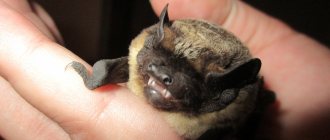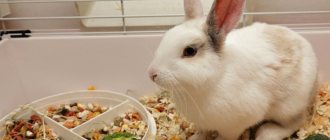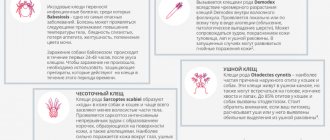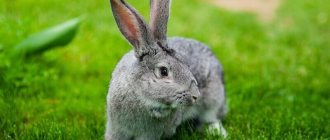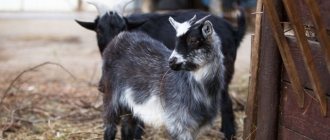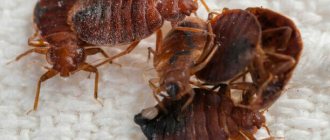Description of the rodent
— Advertising —
The body length of the rat is from 8 to 30 cm, the length of the tail is either the same as the body length or exceeds it, weight depending on the species is from 40 to 400 g. The body color is predominantly dark gray or gray-brown, yellow is also found , red and orange tones. The toes are very flexible.
Basic pest control tools
Man has been waging war against rats since those ancient times, when neither tools as such nor the very concept of deratization existed. In those distant times, the most popular and effective method of exterminating rats was biological, that is, using cats, dogs and the rats themselves. Here, humans took advantage of the noted tendency of rodents to cruelty and cannibalism. People artificially created a “rat king.” Several rats were caught and placed in a confined space without food. Rats cannot stand hunger, so after a couple of days they begin to eat each other. The winner, the strongest surviving rat, was fed for some time with weakened relatives in order to finally become accustomed to a certain feeding style. Then this monster was released into the territory to be “cleaned up.” All the work of exterminating rats was done with the hands, or rather, with the teeth of the rats themselves. Simple, like everything ingenious. It is not surprising that the sophisticated and resourceful human brain eventually came up with other ways to combat rodents. Today, any city dweller has a much wider choice of them than a caveman. So everyone can satisfy their preferences.
Rat traps
The most common and simple trap is a regular mechanical rat trap with a spring.
.
There are many modifications, but they all work on the same principle - the spring straightens when you touch the nozzle with bait and the gripping mechanism pinches the rodent's head. The advantages of this method are ease of use, lack of dependence on the electrical network, and ease of installation. The disadvantage of this device is that the mechanism operates blindly once and can easily “miss”. Rats have a good reaction and well-developed intuition, which allows them to dodge danger in time. More reliable traps in this regard are adhesive traps
- they do not allow the rodent to escape, securely gluing the paws to the base of the structure. Another advantage of these devices is that there is no need to remove the corpse from the trap - they are disposable and are disposed of along with the rat.
Poisoned Bait
There are a lot of poisons for rats, both in form and content. Granules, briquettes, liquids - they all have a detrimental effect on rats. Depending on the active substance, the death of the rodent occurs within 1 to 15 days. Poisons with the active substance diphasinon kill rodents slowly. Repeated administration of the drug is required for a lethal dose. Substances containing brodifacoum or bromadiolone act faster; a rat only needs to try the poisonous bait once for it to go to another world. The most powerful rat poison with an immediate effect is based on strychnine, thallium salts, lead, phosphorus, and arsenic. Phosphorus damages bone tissue, arsenic affects the nervous system, and other components cause severe poisoning. Preparations based on zoocoumarins have become widespread for home use. You can always find drugs such as:
- Rat Death;
- Storm;
- Nutcracker;
- Goliath;
- Clean house;
- Mortorat;
- Zookoumarin Neo;
- Hedgehog;
- Ratindane;
- Zernotsin;
- Tsunami Extra;
- Varat.
All these poisons are quite toxic and dangerous not only for rats, but also for people and pets. In addition to the risk of poisoning your pets, there is a risk that death will overtake rodents in hard-to-reach places under wall cladding or tiled lining of water pipes. It is almost impossible to remove corpses from such places without destroying the structure. The smell from decaying animals is unbearable and harmful to health. So when choosing rat poison, consider all the risks! If you are not inclined to risk your health, then it is better to consult a specialist.
IMPORTANT
Companies professionally engaged in deratization, firstly, use special closed-type traps in which the poison is inaccessible to children and pets, and secondly, they use new generation drugs with a mummifying effect. After their absorption, the corpse dries out without the spread of unpleasant odors. That is, specialists remove all risks and provide a guarantee for their work.
The rat is a dangerous, cunning and intelligent opponent. You must be prepared to fight him in every way!
Spraying deterrent chemicals
Rats are wary of any strong odors. And from some people they know well, they simply run away. Among them there are aromas of both plant origin and chemical preparations. Plants include peppermint, tansy, and wormwood. These aromas are commercially available in the form of essential oils, in which the concentration of active substances is significantly higher than that of the fresh or dried plant. They can be used undiluted for spraying around the room. Gardeners and summer residents can be recommended to plant black elderberry around the house and beds. The roots of the plant release cyanide into the soil. However, all parts of the plant contain hydrocyanic acid to one degree or another and are a strong poison for rats. They avoid the danger they know well.
Among chemical substances, rats are particularly disliked by ammonia; however, any insecticides with a pungent odor are suitable for spraying indoors.
Another smell that serves as a signal to escape is the smell of burning wool. Our ancestors, in order to drive rats out of their territory, burned one killed rodent and left it where rats got into the habit of visiting - in a barn, cellar, barn. So to speak, a demonstrative execution for the edification of the entire tribe. To use this ancient method of repelling rats, it is not necessary to catch and kill the animal - you can just as easily set fire to a piece of any natural fur or wool. This source of smell can be left for some time even in a city apartment.
Ultrasonic repellers
Rats communicate with each other using ultrasound, so they react to ultrasonic waves and listen warily to their radiation. If they sense a distress signal, a threat, or obvious danger, they take flight. If the manufacturers of the ultrasonic repeller did not bother to ensure that the signal was exactly the same, then the rats very soon get used to the monotonous impulses and stop responding to them. We must not forget that the rat is not just a very smart animal, but a highly intelligent creature with excellent instincts - it is quite capable of distinguishing a real threat from an imaginary one. At the moment, the market offers a large selection of rat repellers of varying power.
On sale you can find devices designed both for the area of a small apartment and for large-scale industrial premises. One of the most famous brands is the Grad ultrasonic repeller. Various modifications of the installation operate in the range from 500 to 1200 square meters, have a unique sound pattern based on the biorhythms of rodents and are equipped with several emitters that send impulses in different directions. Many models of this brand are capable of operating autonomously, without requiring constant connection to the electrical network. All these models can be successfully used in production. For small apartments, we can recommend a set of three Weitech WK-3523 ultrasonic repellers. Each of the three devices in the set is equipped with a plug and is plugged directly into the outlet as a fumigator. You can use one device or all three in different rooms. Each of them has a repellent area of 45 square meters. The devices operate silently and are designed for round-the-clock operation. You can only check how effectively this product will protect you from rodents empirically. A person approaches the extermination of rats, as well as other everyday problems, with his own standards, principles, and preferences. Of all the methods of controlling rodents, everyone can choose the best one for themselves.
Rat nutritional features
Rats are omnivores, but each species has its own preferences. Some people eat more plant foods, seeds, vegetables, and fruits. Others prefer insects, mollusks, and small invertebrates. For example, the diet of a gray rat always contains animal protein, fish and amphibians, mollusks, small rodents and insectivores. From plant foods, rats feed on seeds, grains, and succulent parts of plants. Near a person they find all available food products, waste, livestock and poultry feed. There are practically no stocks.
A rat consumes 20-25 g of food per day, and 7-10 kg of food per year. Rats endure hunger very hard; without food they die on the 3-4th day. They die even faster in the absence of water. A rat usually drinks 30-35 ml of water per day, 5-10 ml if wet food is available.
Where do rats live and what do they eat?
Rats live everywhere. In the wild they live:
- In forests;
- In the fields;
- In deserts;
- On the banks of reservoirs;
- Wherever they are able to get their own food.
Rats settle in populated areas:
- In the basements;
- In attics;
- In garages;
- In barns;
- In warehouses;
- In food storage;
- In production premises;
- In landfills;
- In sewers;
- In the cellars;
- In barns;
- And even in apartments;
FACT
The range of temperatures comfortable for rats to live and reproduce is incredibly wide. They feel great and reproduce safely at air temperatures from minus 20 to plus 50.
Rats are omnivores and very voracious. They feed on both plant and animal foods. In the absence of food for a long time, they are able to devour each other and their offspring.
FACT
Rats cannot tolerate hunger or thirst at all. Without food, a rat will not survive even three days! Even less without water. Two days without life-giving moisture can kill a rodent.
Maybe this is why rats are incredibly thrifty. The fear of being hungry prompts the rat to continuously carry food into its hole. Those who managed to stumble upon a rat's pantry simply threw up their hands in surprise - these supplies could feed an entire family for months. Among the rat's supplies you can find several buckets of potatoes, carrots and other vegetables. Sausages, cheeses, eggs, just in commercial quantities. There is also no shortage of cereals and cereals. Rats are known to consume one fifth of the world's grain crops.
Common types of rat
Gray rat, or pasyuk (Rattus norvegicus)
Body length without tail is 17-25 cm, weight 140-390 g. The tail is shorter than the body, up to 19.5 cm in length. The muzzle is blunt and wide, the ears are small. The color is gray with red in adults. The hair on the abdomen is white with dark bases. Sometimes there are black individuals.
The species is distributed on all continents except Antarctica. Eastern Asia is considered the homeland of the gray rat, from where they passively settled mainly on sea vessels.
Tan Rat (Rattus adustus)
Endemic to the island of Engano, which is located 100 km southwest of Sumatra (Indonesia). Outwardly it resembles a gray rat, but is more red in color.
Kinabuli rat (Rattus baluensis)
The species is found in Malaysia in northern Borneo at altitudes of 1524-3810 m above sea level. Lives in mountain and moss forests. Outwardly similar to a gray rat.
Black rat (Rattus rattus)
Smaller in size than the gray rat. Body length is 15-22 cm, weight 132-300 g. The tail is covered with dense hairs, longer than the body. The muzzle is narrow, the ears are large and round in shape. There are two color options:
- dark or black-brown above with a greenish tint of guard hairs; light sides; ashy or dirty gray tummy;
- on top the color is like that of a gray rat, but lighter and yellower, the tummy is whitish or yellowish.
Southern forms are usually larger and lighter in color than northern ones.
The species is cosmopolitan, distributed in Europe, Asia, Africa, America, and Australia.
Australian swamp rat (Rattus lutreolus)
Body length 12-20 cm, tail length 56-150 mm, weight about 115 g. The coat is gray-brown or dark gray on top, the belly is usually lighter, from brown to cream color. The hairs have golden tips. The ears are small and invisible in the fur. The tail is scaly with sparse hairs.
The species is found southeast of Fraser Island and south to Kangaroo Island, Tasmania, Bass Strait Islands, Queensland, up to 1600 m above sea level.
Long-haired rat (Rattus villosissimus)
Endemic to central and northern Australia, where it lives in arid or desert areas. Outwardly similar to a black rat.
Small rat (Rattus exulans)
The body is short, the muzzle is pointed, the ears are large, the color is brown. Body length is from 11.5 to 15 cm (without tail), the tail is thin, with “rings” on the surface. The length of the tail is equal to the length of the body. Weight is 40-80 g.
This is the third most common species of rat in the world. Indonesia is recognized as its homeland, from where the small rat was distributed throughout Southeast Asia and Oceania. Lives in steppes, fields and forests. Kept as a pet.
Range, habitats
Rats, which are widespread representatives of the Mouse family, appeared as a species long before humans. Representatives of the numerous genus of Rats live almost everywhere. Different species are found in Europe, inhabit the countries of Asia, South and North America, live in Oceania and Australia, New Guinea and the islands of the Malay Archipelago.
However, such rodents cannot be observed en masse in the subpolar and polar regions. In central Russia, there are mainly two species of rats: gray and black. If necessary, within a day, an adult rat is quite capable of covering a simply enormous distance, reaching fifty kilometers.
The rat knows how to adapt to very difficult, almost unbearable living conditions, which is why they can be found even at abandoned scientific stations in Antarctica.
Return to content
Rat behavior
Rats lead a terrestrial or semi-arboreal lifestyle. In order to hide, they use burrows, which they dig themselves or by finding abandoned empty burrows of other animals. They live either alone or in family or territorial groups. There are up to several hundred or thousands of individuals in colonies. There is a hierarchy within the group. The colony occupies an area of up to 2000 m2, and marks it with scent marks.
Rats are active at night and at dusk. They often settle next to a person and easily adapt to his activity.
Population and species status
Over the last century, the distribution area of the black rat has noticeably decreased and become noticeably fragmented. It is generally accepted that the black rat population is being replaced by the more prolific and hardy Pasyuk. However, the population of wild rats does not outnumber humans, as there are a number of very important and highly effective ways to keep the rodent population under close control.
According to rat control inspectors, the total number of such animals is markedly reduced by food and shelter shortages. Among other things, population levels are controlled by disease and certain predators.
Most rat species are not currently at risk. The false water rat (Xeromys myoides Thomas) belongs to the category of rare and protected species. The decline in the number of this rare and little-studied species may depend on the development by people of the main habitat of the rodent.
The House Rat is classified as an endangered species. This rare species, living in a fairly limited area, is represented by a total number of two thousand individuals living on Franklin Island. It is assumed that annual deforestation and fires can cause a decline in the population of the kangaroo rat, which received its unusual name solely thanks to the kangaroo musk rat.
Return to content
Rat breeding
They breed throughout the year, except in northern populations. The gray rat has 2-22 cubs in one litter, on average 8-9, in Malayan species from 3 to 6, in Australian species from 3 to 14
Under natural conditions, rats breed in warm weather, 2-3 times a year, and in heated rooms - all year round, breeding up to 8 offspring. The breeding cycle has a spring and autumn peak.
Pregnancy lasts 22-24 days. Babies weigh 4-6 g and are born naked, blind, with closed ear canals. Stillborn and weak rat pups are eaten by females. Males do not take part in raising offspring. The eyes of rat pups open 2 weeks after birth. At the age of 3-4 weeks they become independent. Females reach sexual maturity at 3-4 months.
The lifespan of rats in nature is from 1.5 to 3 years.
What damage do rats cause?
Rats consume and contaminate food and animal feed. They also damage containers and packaging materials in which food and feed are stored. All types of rats cause problems by chewing on electrical wires and wood structures (doors, ledges, corners and wall material) and tearing through insulation in walls and ceilings for nesting.
Norway rats can undermine building foundations and slabs. They can also chew through all types of materials, including soft metals such as copper and lead, as well as plastic and wood. If rats live in the attic of a residential building, they can cause significant damage through their gnawing and nest building. They also damage garden crops and ornamental plantings.
Interesting facts about the rodent:
- Rats cause economic damage as they eat and spoil food and non-food products, damage electrical networks, and cause damage to agriculture. In addition, they are a natural reservoir for many zoonotic and anthropozoonotic infections (plague, tularemia, rabies, typhus, toxoplasmosis, leptospirosis, rickettsiosis). Therefore, many methods have been developed for their destruction - deratization. But rats can adapt to and recognize poisons.
- In the United States, rats bite about 14,000 people every year.
- Since the 19th century, specially bred rats have been kept as pets. They are also bred as “live food” for home terrariums and zoos.
- Rats are the main experimental system in biological and medical experiments. Special laboratory rats were bred for this purpose. They are distinguished by their fast metabolism, unpretentiousness and peaceful nature.
- Rats are considered very intelligent animals; along with humans, they have abstract thinking. In addition, they respond to tickling and produce ultrasonic laughter-like sounds.
- In China, the rat is a symbol of prosperity and the first animal to open the cycle of the eastern horoscope. In Islam, the rat is the embodiment of sensuality, and Hinduism represents the rat as a former demon.
How dangerous are rats to humans?
Rats are a serious threat to human health. Under certain circumstances, rats can destroy as many human lives as sometimes even war does not claim. So in the 16th century, rats killed a third of the population of all of Europe, bringing here the plague, the epidemic of which spread across the continent like wildfire. These inhabitants of garbage dumps, city dumps and sewers are carriers of more than eighty different diseases, many of which are deadly. This:
- encephalitis;
- sodoku;
- streptobacillosis;
- rabies;
- typhus;
- fever;
- cryptosporidiosis;
- giardiasis;
- leptospirosis;
- tularemia;
- listeriosis;
- tuberculosis;
- hepatitis;
- salmonellosis;
- toxoplasmosis;
- plague.
INTERESTING
It is surprising that, being walking death that mows down people, the rats themselves remain unharmed - all the infections and viruses that they carry do not affect their own health in any way! These tenacious creatures are resistant even to strong doses of radiation.
In addition to the obvious threat to health, rats also cause serious economic damage to humans. It is difficult to calculate all the colossal damage to agriculture, private gardens and vegetable gardens. Rodents destroy grain crops, root crops, seedlings, seedlings, fruit trees, and fruits literally on an industrial scale.
The main advantages of keeping a rat
Fortunately, the advantages of decorative rats are much greater than the disadvantages. Below are listed only the main positive qualities of the animals.
High socialization
Rats do not tolerate loneliness very well; they prefer to live in small same-sex groups. At the same time, animals show care for their relatives:
- brush each other's fur coats;
- feed weakened individuals;
- show sympathy;
- warn of impending danger.
Fights and conflicts between rats are a very rare phenomenon, which is observed mainly in males during sexual activity.
High cognitive abilities
Contrary to popular belief, rats are very smart. Their intellectual abilities are on par with cats and dogs. Rodents remember their name well and are easy to train.
Fluffies can be taught on their own such commands as “give me a paw”, “lie down”, “come to me”. Rats also perform simple tricks - walk on their hind legs, roll a ball, spin around their own axis, jump from place to place.
Easy to care for
The cute fluffies are quite easy to care for. Difficulties may arise at first, but the main thing is to get used to it. By choosing a cage with a removable tray, cleaning takes literally 10-15 minutes.
Sawdust or shredded toilet paper are used as filler. You can feed your rodent either specialized food or natural food. The only caveat is that you need to remember the list of prohibited products.
Doesn't take up much space
Decorative rats are quite compact. Their body length is about 20 cm. Therefore, several individuals can be kept in one multi-tiered cage at once - up to 5-6 pieces. The rat house itself does not take up much space. The cage will easily fit on a desk or bedside table.
Affordable price
The price of a decorative rat, even one raised in the most prestigious nursery, is unlikely to rise above 2,000 rubles. And at the poultry market or by hand you can buy a purebred pet for only 500-700 rubles.
It is better to buy rats from professional nurseries. Because pups raised by experienced breeders are more socialized and healthier.
Easy to transport
Rats tolerate moving well even over long distances. All that is required for comfortable transportation is a special carrier with a secure lock, while ensuring air circulation. The small weight of the animal - within 500 grams - will prevent the owner from getting tired during the trip.
Big choice
There are many breeds of decorative rats, so everyone will find a pet to their liking. Among the varieties there are different animals: compact and bulky, bald and fluffy, with straight and curly hair, with large and small ears, albino and fluffy with complex colors.
Cleanliness
Many people believe that the destiny of rats is to climb through garbage dumps and rummage through garbage. However, ornamental animals are very different from pasyuki. Cute fluffies are very clean.
They perform daily activities to maintain the cleanliness of their body: they wash themselves after each meal and lick their fur. And if several individuals live in a cage, they happily clean each other’s fur coats. In addition, decorative rats love to swim. The owner must take care of organizing water procedures.
Attachment to the owner
Rats quickly get used to their new owner and happily spend time with him. In addition, cute animals gradually get used to the rest of the family members. If a rodent feels good about itself, it will never bite, scratch or run away from home.
Possibility of litter training
Rats are very smart, so they can be trained to go to the toilet in one designated place. This will only require a few trays (according to the number of pets in the cage) and a little patience.
The duration of toilet training is from 2 to 4 weeks. If the rat gets used to the litter box, the process of cleaning the cage will take much less time.
Activity
Decorative rats are very active - they really like to play with their relatives, exercise on apparatus in the cage, and explore everything new. It is very interesting to observe the life of fluffies from the outside. If you have free time, you can spend hours on end watching cute animals frolic.
Since rats are very active, it is better to purchase multi-tiered cages for playful animals. 2-3 floors will be enough for males, 4-5 tiers for females.
No need to spend a lot of time together
Rats love their owners very much and are always willing to play with them. But if the furry owner doesn’t have much time to spend together, it’s okay. Fluffies are able to keep themselves busy - they exercise on apparatus, play, and frolic with their cage neighbors. At the same time, the rodent does not develop any resentment towards humans.
No need to go outside
Other pets, such as cats and dogs, need a lot of space. In addition, such large pets prefer to go to the toilet outside.
With rats everything is much simpler. The little animal feels quite comfortable in a cage. And to release the accumulated energy, a play complex installed in a cage is enough for a rodent.
The difference between a mouse and a rat
Baby rat
Baby rats and mice are born very tiny, completely naked and blind. Therefore, it is simply impossible to distinguish them at first glance. However, for experienced zoologists, the differences between newborn mice and rat pups are obvious:
- mice have a round body shape, while the body of baby rats is oblong;
- the little mice are distinguished by a slightly flattened muzzle, while the little rats' faces are stretched forward;
- mouse ears have an almost round shape and are quite large compared to the size of the head; the ears of baby rats are smaller and slightly pointed or blunt at the tips;
- rat pups have a more developed tail - it is quite thick and long, while mouse tails are short and graceful, and also more mobile;
- during sleep, baby rats prefer to roll over on their backs and spread their paws in different directions, while mice sleep in a ball, like kittens;
- Mouse paws lack the characteristic webbing between the toes of rats.
If you look at the litter as a whole, you can determine whether it belongs to one or another species by the number of babies. Mice give birth to fewer babies - 5-10. In rats, the offspring are more numerous - each pregnancy ends with the birth of 12-15 rat pups. Sometimes the number of rat droppings reaches 22-24 pups.
As they get older, the differences become more obvious. Mice open their eyes earlier - after about 5 days, and are completely covered with hair after 10 days. In rat pups, these physiological processes take approximately 2 times longer. But at two weeks of age, the baby rat’s body parameters are comparable to the size of an adult mouse.
Rat as a pet
Gray rats are easily tamed and bred as pets and test animals. Decorative rats are friendly towards people, omnivorous and clean, so caring for a pet rodent does not cause any special problems. It is important for all potential owners of rats to take into account that they are social animals and keeping rats alone will cause psychological stress in the animal.
